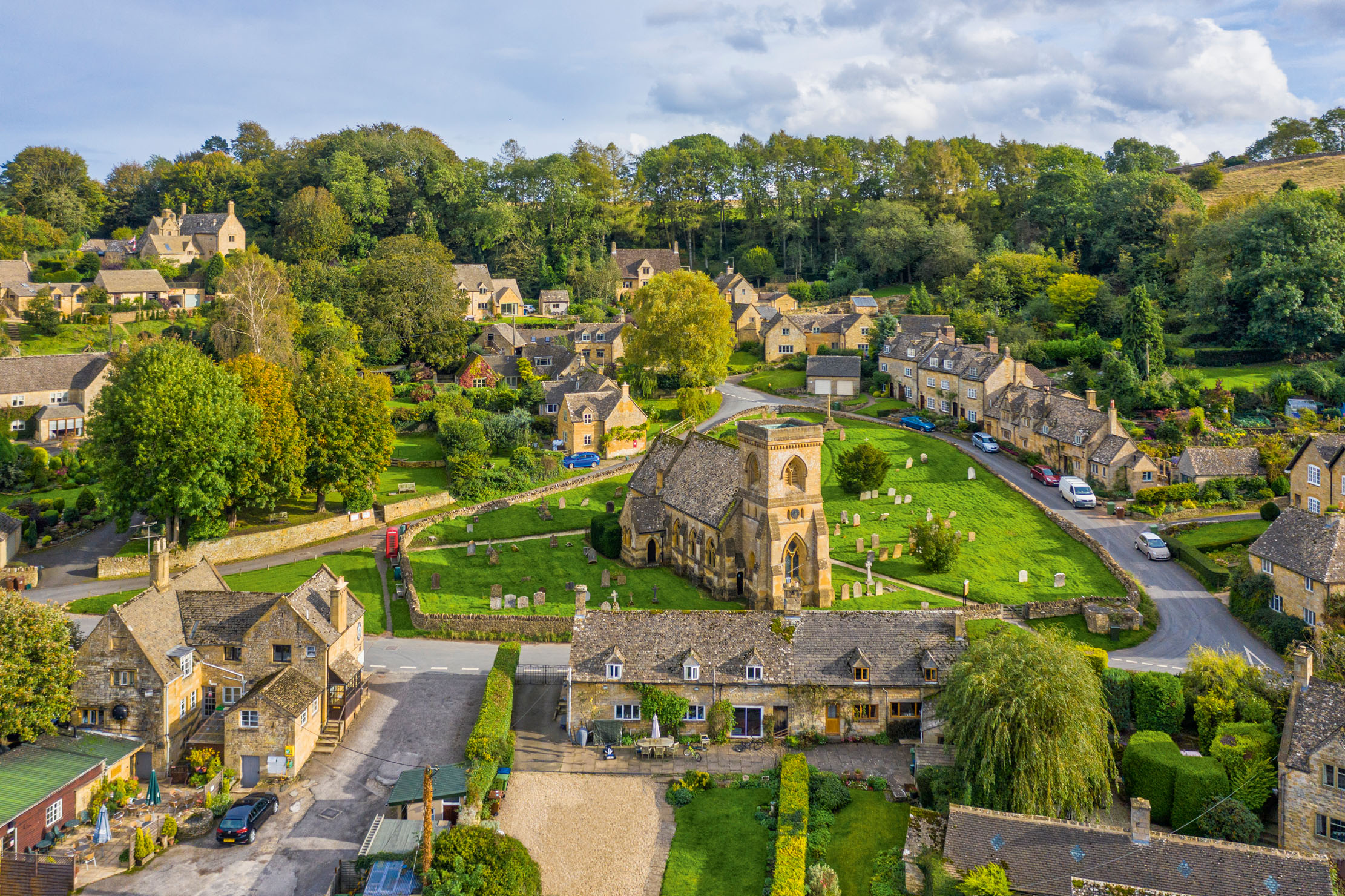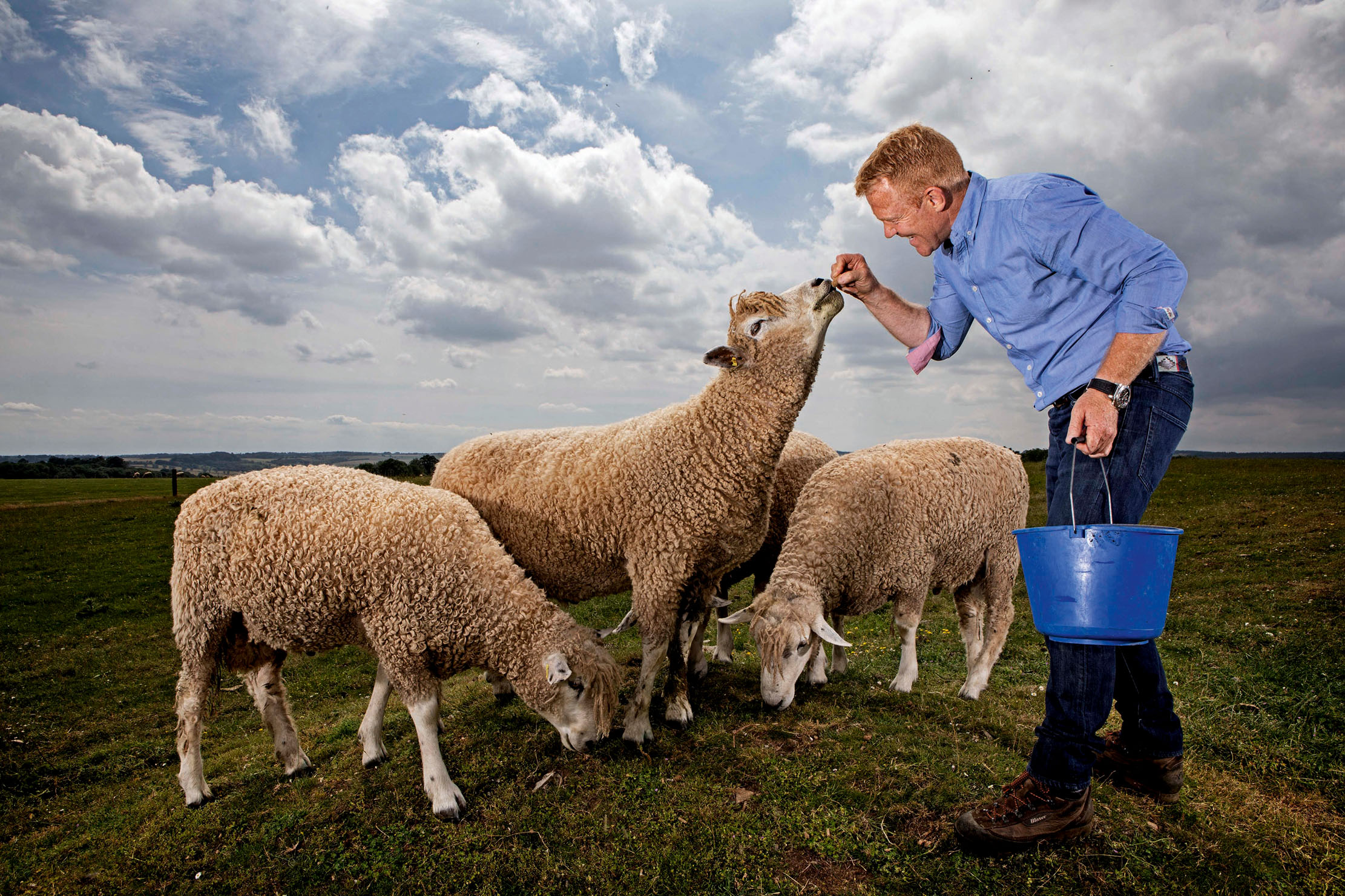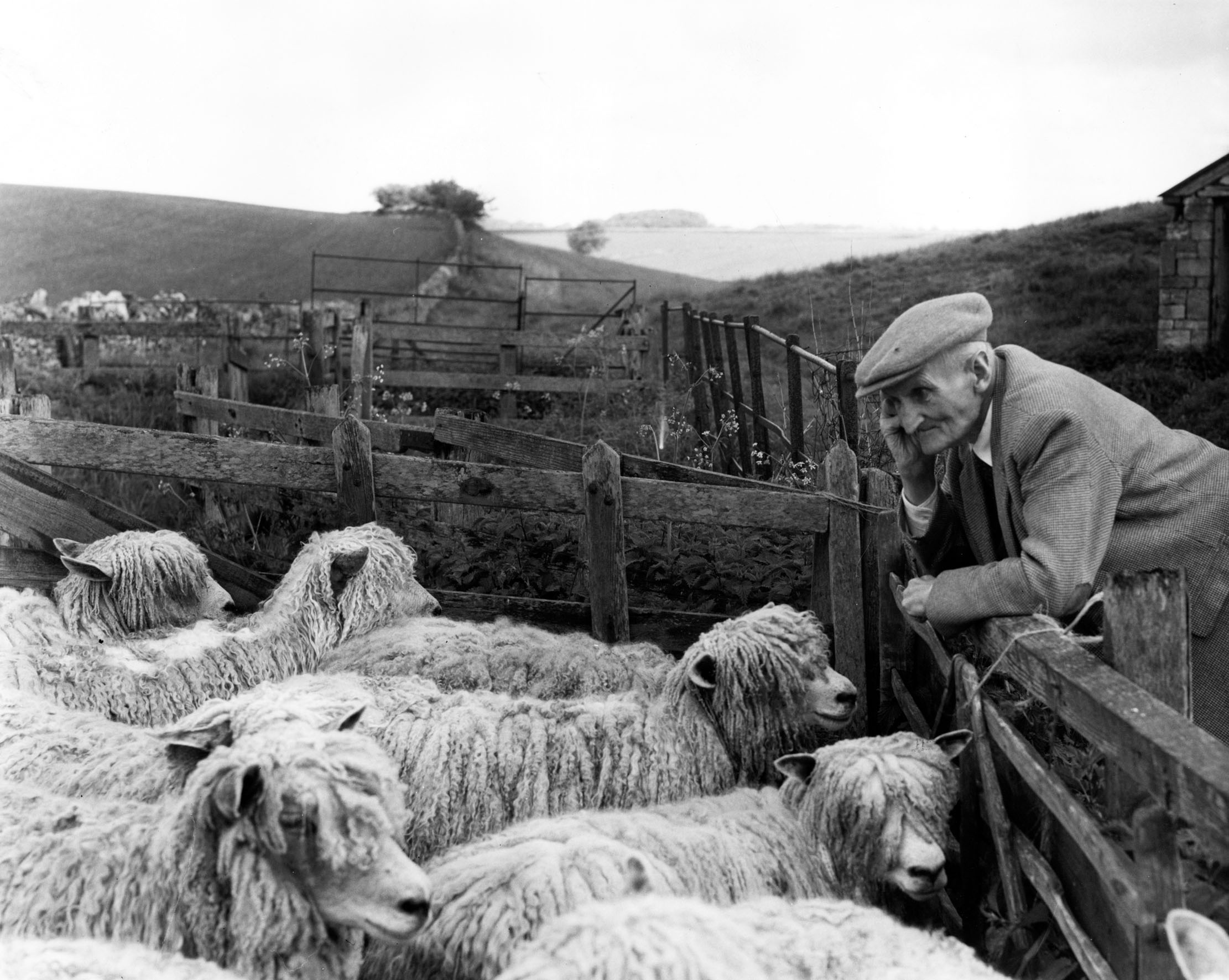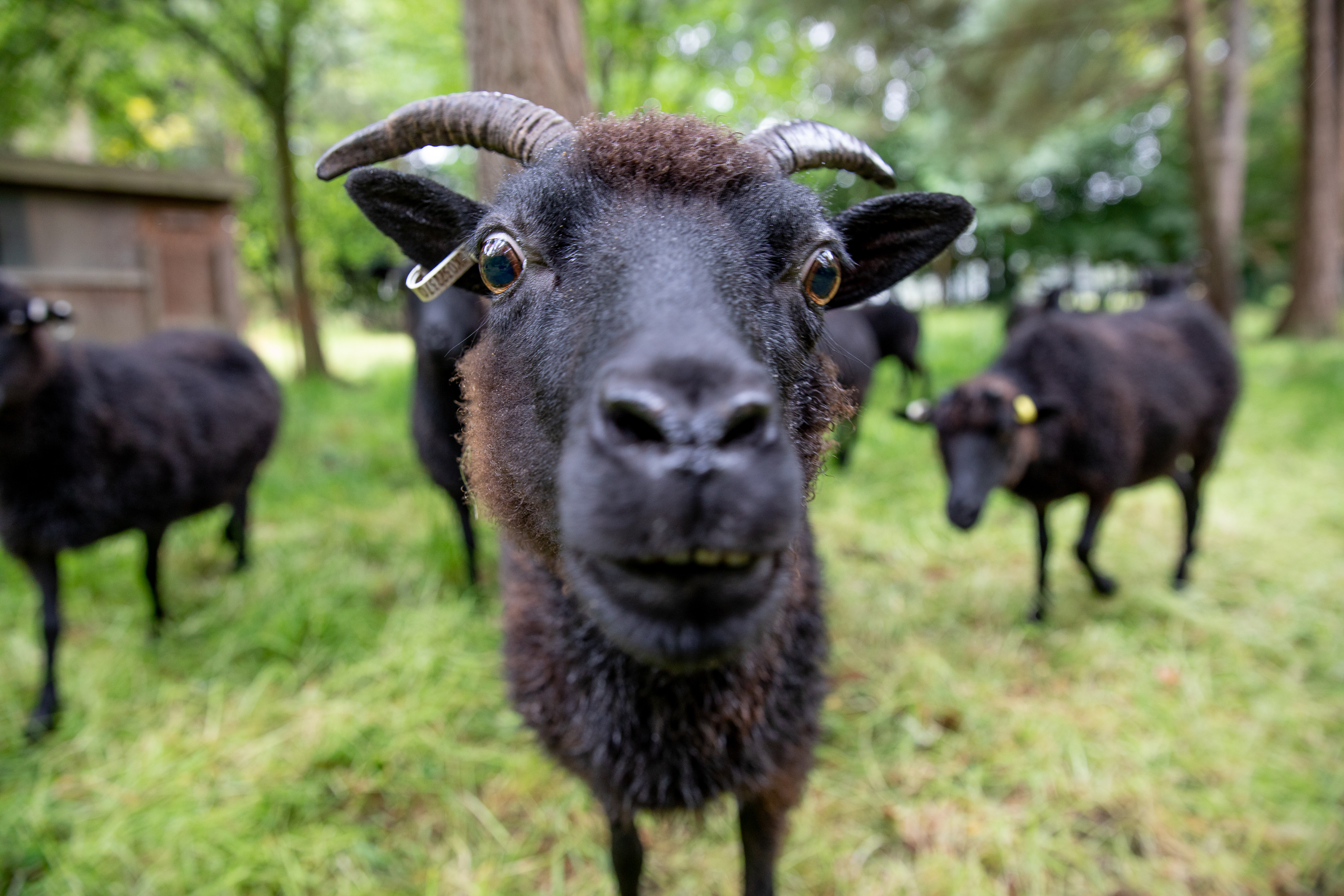How the sheep of the Cotswolds outlasted the Roman Empire and the Black Death to help build one of Britain's most beautiful areas
From warm cloaks for the Roman army to many handsome churches, much of England’s might and wealth once rested on the back of the Cotswold sheep’s ‘golden fleece’, says Charles Harris.

In AD47, Roman cavalry sent west by Aulus Plautius found a land of gentle limestone hills between the Thames and the Severn, grazed by the primitive small sheep of the Dobunni tribe. A fort was built at Corinium, now Cirencester, soon a strategic junction on the Fosse Way and Ermine Street. By the second century, it was a provincial capital, complete with basilica and amphitheatre, second only to London in size and significance. Nearby country villas were centres of farming estates, which grew grain and kept sheep.
The Roman Empire reared sheep extensively and it is generally understood that the famous Cotswold animal — large, sturdy, with a friendly, amused expression, a hardy constitution, good maternal instinct, long, thick, lustrous wool and curly ringlets on a broad hornless forehead — descends, with improvement, from Roman introduction. Despite little explicit evidence, it seems clear that longwool sheep were imported, for the indigenous Neolithic ones had poor fleece. Cotswold wool clad Roman soldiers. Tacitus recorded extensive clothing trade with Corinium in the 1st century AD and Diocletian’s ‘edict’ of AD301, listing desirable imperial products, included the birrus Britannicus — an expensive, hooded, woollen cloak.

Cotswolds sheep: 7 fascinating facts
- Steve Parkes, Cotswold breeder, historian and sheep judge, suggests that wethers (castrated rams) grow the best fleeces ‘as they have nothing to distract their minds’. He regards Cotswolds as ‘highly intelligent, delicious to eat, with a distinguished ancestry’
- Why ‘Cotswolds’? ‘Cots’ are sheep shelters and ‘wolds’ low hills. An alternative derivation, from a chieftain called Cod, is less persuasive
- The staple is a lock or tuft of wool, but also the name of the English wool trading centre at Calais
- The Cotswold Sheep Society has 131 members and Cotswolds are entered in shows, such as Moreton-in-Marsh and Royal Three Counties. The society promotes a modestly increasing market in fleece for mattresses, blankets, rugs and ‘artisan’ clothing
- Although common breeds cost more to shear than their wool is worth, a Cotswold fleece can fetch more than £25
- There are about 15 million sheep in England and 33 million in the UK
- Traditionally, Lord Chancellors sat upon a woolsack in the House of Lords, which, it was discovered in 1938, actually contained horsehair
Rome declined and fell, and, in about 410, its legions withdrew. The sheep remained here, undisturbed. Although pagan Saxons defeated the Romano-British near Bath in 577, by 800 they were church-building, sheep-loving Christian farmers. The Abbess of Gloucester owned extensive Cotswold sheepwalks and sheep were kept at the many places called Shipton (sheep farm). In 796, Charlemagne himself sought Cotswold cloaks.
Viking slave traders laid waste from Gloucester to Chippenham in 877, then lingered in Cirencester. The flocks survived this, too, doubtless because Norsemen appreciated wool, both to wear on their chilly expeditions and for sails — woven by captive females who were known to go blind at their looms in gloomy huts. Cotswold sheep, secure in the breeze and drizzle of their remoteness, escaped the warfare of Alfred and subsequent Saxon rulers. The Normans, after initial rapine, brought order; and extensive ecclesiastical sheep farming prospered. Domesday records from 1086 specified the Queen’s entitlement to wool from around Cirencester.
Flemish merchants were in England by 1100 and their weavers wanted Cotswold wool. In 1135, Caen Abbey grazed 1,700 sheep at Minchinhampton. The Bishops of Winchester had flocks near Witney. By the late 12th century, longwool was twice the price of other fleeces. In 1193, Cistercian monks are said to have provided 50,000 sacks of wool towards the ransom of Richard I, who had carelessly allowed himself to be captured when returning from the Third Crusade. (This figure is questionable: it involves astonishing weight — 8,000 tons — and remarkable logistics: medieval carts needed four horses to pull a ton, packhorses carried perhaps 250lb).

By the mid 1200s, wool — not only the pre-eminent Cotswold — was the backbone of the economy. Winchcombe Abbey alone grazed 8,000 sheep. Although a devastating ‘murrain’ fever killed half the national flock in 1275, exports climbed steadily and Italians became dominant buyers. Tuscan merchant Francesco Datini regularly visited Northleach and Burford, observing (in Italian) ‘the finest and most expensive [wool] was from the Cotswolds’. In the 14th and 15th centuries, great galleys — Florentine, Genoese and Venetian, armed to deter pirates — swept flamboyantly into Southampton to collect Cotswold wool and deliver dyestuffs of alum and woad.
The 14th century was dire: severe winters, crop failures, vineyard extinction, famines, incessant rain, plague and the Hundred Years War. To fund his campaigns, Edward III, who rebuilt Windsor Castle at unprecedented expense, exploited wool rather like contemporary governments impose windfall taxes on oil companies. He was unscrupulous. In 1337, he decided to acquire the national annual wool production by compulsory purchase, on credit at a low price, to sell high on the Continent. He got much less than he hoped, royal debts to English merchants were dishonoured and they could not export independently.
Exquisite houses, the beauty of Nature, and how to get the most from your life, straight to your inbox.
Then the Black Death struck in 1348 — and often recurred. England’s population of about six million halved. Villages such as Tusmore in Oxfordshire were wiped out. However, as historian Philip Ziegler has observed, ‘the medieval Englishman obstinately carried on in his wonted way’ and so did the Cotswold sheep. Shortage of manpower greatly encouraged sheep farming, for one man could look after 500 animals (Edward I had eliminated wolves). Between 1280 and 1365, wool exports doubled. In 1400, cloth exports overtook those of more highly taxed fleeces and half the King’s tax revenue came from wool, of which the Cotswold enjoyed the highest prestige. Don Duarte, King of Portugal, ordered 60 sacks in 1437, to be interwoven with golden thread in Florence.

In 1442, 4,500 tons of wool were exported and, by 1520, wool and cloth (from eight million sheep) constituted a remarkable 80% of England’s exports. The golden-fleeced ‘Cotswold Lions’ stood triumphant at their zenith — a priceless rustic diadem, the bleating heart of the nation’s wealth, and the basis of Henry VIII’s dazzling display at the Field of the Cloth of Gold.
The wool industry was complex: it involved suitable sheep, nutritious pasture, streams for washing, skilful shearing, trustworthy grading (for length, strength and colour), scouring (to remove lanolin, dirt and sweat), carding or combing with teasels to align the fibres, spinning into yarn, weaving on a loom, fulling (the cleaning, pounding and shrinking of the cloth to create strong adhesion between the fibres — done in watermills with Fullers earth, an absorbent, locally available clay), stretching (on tenterhooks), dyeing, finishing and packing in canvas ‘sarplers’ to be carried to Southampton or London by packhorse or cart.
All this flourished in the Cotswolds. Despite the Wars of the Roses, wool merchants prospered remarkably, and, like Rockefellers or Rothschilds, they showed it. Their preferred spending, whether out of piety or ostentation, was the reconstruction and embellishment of churches. Perhaps the finest ‘wool churches’ are Fairford, Northleach, Cirencester and Chipping Campden.

Weaving had long been expanding. The adoption of fulling mills and mill-powered looms meant that sites with fast-running water were desirable, such as those around Stroud. Cloth exports rose from 40,000 ‘pieces’ (24 yards long) in 1400 to 60,000 50 years later, a level sustained for about a century. Cotswold wool, like that from Norfolk, was especially suitable for worsted cloth.
The Dissolution of the Monasteries ended what had been skilful clerical farming and marketing and competition from imported Spanish wool developed. One pound of finest Merino spun into more miles of yarn than the 20 or so that a Cotswold yielded. Wool production exceeded domestic needs. Imaginative efforts to increase demand included Elizabeth I’s instructions to wear woollen caps to church and Charles II’s requirement that everyone be buried in a woollen shroud. Bizarrely, export of raw wool was forbidden in 1660, prompting extensive smuggling by ‘owlers’.
As the transformational improvements of the early industrial revolution began to develop, weaving — what Defoe called ‘this truly noble manufacture’ — gradually left Gloucestershire and Oxfordshire for Yorkshire. Machines no longer required longwool to produce good cloth, but utilised short staple fleece from less distinguished sheep. James Wolfe (who died capturing Quebec) found Gloucestershire handloom weavers ‘so oppressed, so poor and so wretched’. But clothier Edward Sheppard of Uley fared better, building Gatcombe Park out of his profits. In 1781, wool prices halved due to the closure of American and European markets. Herefordshire wool overtook Cotswold in value.

George III asked Joseph Banks to import Merinos (covertly) to Kew in 1788 and he established an influential flock. Australian wool began to arrive in the early 19th century and cotton provided an alternative clothing material. Cotswold weaving towns declined. Seventy-five mills closed in Stroud between 1820 and 1844, although the town still produced red military cloth, baize for gaming tables, Hudson Bay trade blankets, blue ‘squires’ coats and, later, tennis-ball covers. Witney specialised in blankets. As wool faltered, the versatile Cotswold became valuable for meat. A Northleach man sold a ram in 1864 for 230 guineas (about £26,000 in today’s money). Cotswolds, usefully resistant to scrapie, were used domestically and worldwide, for breed improvements, and in America were fed to railroad navvies — 21,000 Cotswolds were registered there by 1895.
However, Cotswold sheep declined dramatically in England. The Cotswold Sheep Society, formed in 1892, collapsed in the 1920s. It was revived in 1966 — when numbers were down to about 200 — by William Garne of Aldsworth, 85, whose family had bred Cotswolds for two centuries. The breed has since rallied. Although it is still ‘at risk’, there are now 85 small flocks, with a total of 1,350 pure-bred ewes. Diana Stanhope, in Shropshire, has the largest, with about 100 ewes. Increasing fleece demand is mainly artisanal.
Owners are remarkably attached to their animals, as can be seen by observing Society chairman, the Hon Angela Reid. Her handsome, almost Roman-nosed rams nuzzle and nudge her endearingly, with reciprocated affection. They are ‘wonderful, historic sheep,’ she says, ‘with character, utility and charm; and we owners seek for them the future their history deserves’. Such magnificent survivors deserve a Renaissance.

Credit: Colette
Everything you need to throw the perfect posh picnic, from luxurious wool rugs to ready-made cocktails
We're not saying that you'll need all these items for a picnic, but we can guarantee you'll want them.

The wool-spinner still using an 1899 loom and a method handed down for 230 years
Toby Tottle embraces the traditional process of textile production in Mainland Britain's only surviving district woollen mill.

PETA told off by advertising watchdog for claiming that 'wool is just as cruel as fur'
The Advertising Standards Authority has ruled that an advertisement by animal rights group, People for the Ethical Treatment of Animals

Credit: Millie Pilkington/Country Life Picture Library
The rise of primitive sheep: Why our own Scottish sheep win top marks for milk, meat and conservation grazing
The hardy, multi-talented sheep from the Scottish isles, whose wool once kept royal legs warm, are coming into their own
Charles Harris KC was a judge for 24 years and is the author of Trial and Error (a polemic and memoir). His interested include history, stalking, skiing, politics, mountain walking, architecture and travel. He has ridden in the Rockies, trekked in Bhutan and written on a wide variety of subjects — from national anthems to cartoons, aviation to art and sculpture, and occasionally law. He lives in North Oxfordshire with his wife Carol, and has three adult children and eight grandchildren.